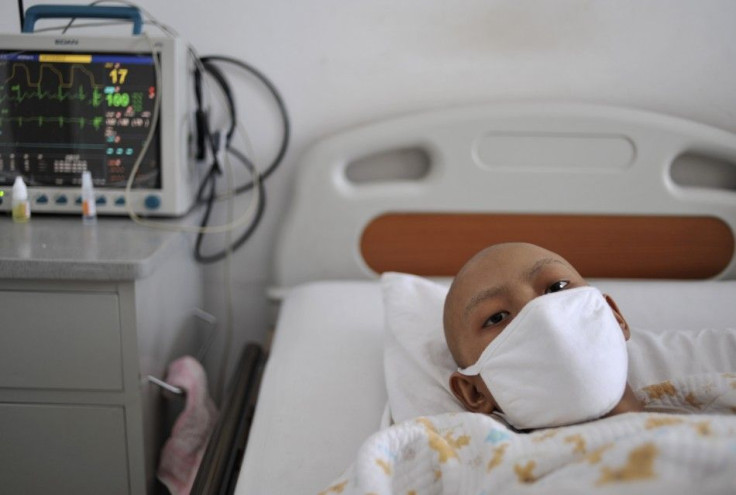Leukemia Claims Fewer Kids' Lives

NEW YORK (Reuters Health) - Kids with one type of leukemia are living longer than they used to, most likely thanks to new drug combinations that mean fewer patients are relapsing after a first round of treatment.
In a study including more than 20,000 babies, kids and adolescents with the blood and bone marrow cancer, patients' chances of surviving at least five years after their diagnosis increased from 84 percent in the early 1990s to over 90 percent a decade later.
We knew that there was a positive trend (in survival), but there had been concerns that the rate of improvement was slowing down, said Dr. Stephen Hunger from the University of Colorado School of Medicine and Children's Hospital Colorado in Aurora, who worked on the study.
Instead, Hunger told Reuters Health in an email, his team was happy to see a consistent reduction in deaths from leukemia, in both older and younger kids and those with high-risk and lower-risk forms of the disease.
In people with acute lymphoblastic leukemia, or ALL -- the most common type of childhood cancer -- the bone marrow makes too many immature white blood cells instead of producing the cells necessary to fight infections.
Fifty years ago, the disease killed almost everyone it struck within a few years. But survival rates steadily rose over the next decades as doctors gained more tools to treat leukemia.
To see if that trend has been continuing, the researchers consulted patient information from Children's Oncology Group studies, which include more than half of kids diagnosed in the United States with leukemia, between 1990 and 2005.
Out of about 21,600 kids and adolescents up to age 22, 83.7 percent who were diagnosed with leukemia between 1990 and 1994 were still alive five years later, and 80.1 percent survived at least 10 years post-diagnosis.
Among those who were diagnosed between 2000 and 2005, 90.4 percent survived at least five years, and 10-year survival rates seemed to be trending upward as well, the researchers reported in the Journal of Clinical Oncology.
Hunger and his colleagues found that both younger kids and adolescents were less likely to die of leukemia in recent years, as were white, black and Hispanic kids and those with higher-risk and lower-risk forms of cancer.
The one exception was infants, who when they do get leukemia, tend to have very aggressive disease. Only about half of infants survived five years after being diagnosed in both the early and later years of the study.
The researchers calculated that infants accounted for only about two percent of all leukemia cases during the study period, but for eight percent of deaths.
This suggests that we need to develop better supportive care for infants and better therapy using newer targeted agents, Hunger said.
NEW TREATMENT REGIMENS
While the chemotherapy drugs considered standard for leukemia treatment haven't changed a lot in recent years, researchers said that advances in drug combinations and doses that better stave off disease relapses are likely behind improvements in survival.
The small drop-off in the number of kids who survive at least 10 years versus five years after a leukemia diagnosis is evidence of that.
A child with ALL who is alive and in first remission five years after diagnosis has an outstanding chance of long-term cure, Hunger said.
He said he doesn't think that the improved survival at five years is due to more cancers being caught early -- which would start the clock on survival ticking sooner. Hunger said he expects the lower rates of death to continue showing up years down the line.
This is a great improvement in terms of outcome, particularly in the past 10 to 15 years, said Dr. Ching-Hon Pui, head of leukemia research at St. Jude Children's Research Hospital in Memphis, Tennessee.
He said the improved leukemia survival rates are consistent with data from the UK and the Netherlands, among other countries, and he credited international collaboration between doctors for the success of new treatment regimens.
That includes improvements in the antibiotics and other drugs used to treat infections related to chemotherapy, so young patients can now get more intensive treatment with fewer risks, Pui told Reuters Health.
But Pui, who wasn't involved in the new study, also highlighted the difference between surviving five or 10 years after a diagnosis and being cured. For kids whose leukemia was treated with radiation, he said, there's still a risk of other cancers a couple of decades down the line, which wouldn't be captured in this study.
There's still a lot of work that needs to be done, but overall (the study) is good news, he said.
Hunger agreed. We are extremely gratified by these high survival rates, but the fact remains that 10 to 15 percent of children and adolescents diagnosed with ALL this year will die from this disease, he said.
SOURCE: Journal of Clinical Oncology, online March 12, 2012.
© Copyright Thomson Reuters 2024. All rights reserved.






















